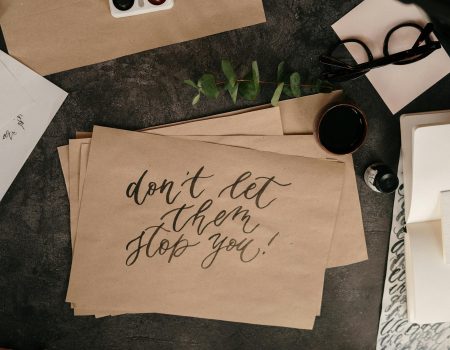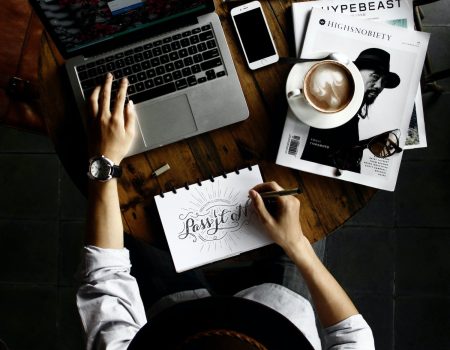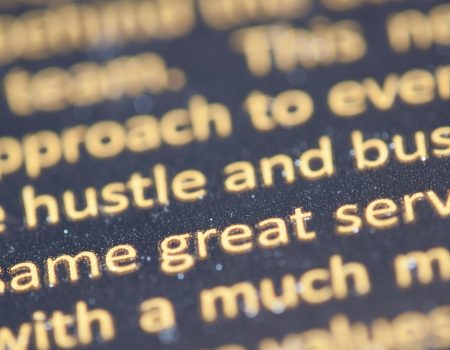The Power of Typography
We have probably all heard about leading in typography and its importance. However before we dive into today’s subject we need to find out a few things about typography. What is the power of typography needs to be answered before we go into detail about leading.
First of all, typography has considerable influence in design and communication. For instance, it establishes visual tone, improves readability and reinforces brand identity. More so it organizes information hierarchy, reflects cultural and emotional nuances. Through careful selection typography shapes perceptions, conveys messages effectively, and fosters meaningful connections with audiences.

The Definition Of Leading In Typography
In typography, leading refers to the vertical space between lines of text. More precisely, it is measured from the baseline of one line of text to the baseline of the next line. Above all, leading plays a crucial role in determining the readability and aesthetics of a text, as good precise spacing can make legibility better. Adjusting leading can help create a harmonious balance between text lines, preventing overcrowding or strange separation.
Typography Trends: What's Leading the Way
Every year trends change and new fashions come along. The same goes for typography and font deconstructio. These are 4 trends that are very much “right” for these times and you can’t go wrong if you use one of them. Let’s learn a bit more about variable fonts, experimental typography, retro and vintage fonts and handwritten and organic fonts.
Variable Fonts: First example, variable fonts allow for dynamic adjustments in weight, width, and other attributes within a single font file. More so, they provide flexibility for the user. Giving more control over typography in responsive design and increasing creativity in typography experimentation.
Experimental and Display Typography: Some designers are increasingly pushing the boundaries of typography. Experimenting with layouts, shapes, and styles to create unique and memorable visual communication. This trend is often seen in branding, advertising, and digital art as it pushes for originality. Just take a look at the font of the Google logo.
Retro and Vintage Typography: Of course, nostalgia continues to influence typography trends, with a resurgence of retro and vintage inspired typefaces. For instance, these fonts evoke a sense of nostalgia for past times while adding contemporary design projects with character and charm. I have noticed that vintage typography is particularly popular in branding, packaging, and editorial design.
Handwritten and Organic Fonts: More importantly, adds a personal touch to design projects. Showing a sense of authenticity and warmth. From casual script fonts to imperfect brush strokes, these typefaces gives a handmade feel. A human touch of you like. Understandably often used in branding, social media graphics, and editorial design to create a more relatable and human connection with the audience.
Unveiling the Secrets of Leading in Typography

Like we explained leading, often referred to as line spacing. This space plays a crucial role in typography, influencing both the readability and aesthetic appeal of text. Let’s find out some of the secrets in effective leading in typography.
Balance and legibility
First we start with the balance and legibility. Of course, proper leading ensures that text is easy to read. Insufficient leading can cause lines of text to appear cramped. Making it challenging for readers to distinguish between lines. And you do want people to be able to read the text right? On the other hand, excessive leading can create too much space between lines, disrupting the flow of reading. Finding the right balance is essential for optimal legibility.
Hierarchy and emphasize
Second secret is the hierarchy and emphasize. We all know that leading can be adjusted to create visual hierarchy within a text block. You can highlight headings and make sure that the reader knows which parts are the most important. Therefore, increasing the leading between headings and body text, for example, can help differentiate between different levels of information.
Similarly, moving leading within a paragraph can emphasize certain passages or break up blocks of text to make it easier to read.
Optical adjustments
In some cases, adjusting leading based on mathematical calculations alone may not produce the results that you want. Here leading is adjusted by visual perception rather than precise measurements. In itself can lead to more harmonious spacing. Plenty of designers often fine tune leading based on the overall look and feel of the text. Use your intelligence and you will know if it looks good.
Contextual considerations
Well, the ideal leading in typography can vary depending on the context of the text and the medium in which it is presented. For example, the body text in printed books can need different leading compared to text displayed on a website or mobile device. Good book design ideas are crucial before attempting anything. Consideration should also be given to the typeface and font size used. Both things could can influence the ideal leading
Testing and iteration
I have said it before and will say it again, testing is essential for finding the ideal leading for a particular design. You should test different leading values and ask for feedback from users to determine what is best in balance of readability and aesthetic appeal.
Exploring the Impact of Leading in Typography
Honestly, the impact of leading in typography cannot be exaggerated, as it directly influences both the readability and visual appeal of text. You should put enough effort into making your typography user friendly as well. I mean you need to make sure it looks good across all different kind of devices.
Leading in typography plays a really big role when it comes to the visual appeal of the text. Balance and harmony in a text is crucial and we don’t normally think about the typography if its easy to read and flows well.

The Evolution of Leading: Stay Ahead in Typography
Initially, leading was manually adjusted by typesetters to provide just the right spacing between lines of text in printed material. However, with the arrival of digital typography, leading became customizable. Mostly through desktop publishing software, allowing designers control over spacing and layout.
Over the times, as design practices have evolved, leading has been used creatively most of all to establish hierarchy. But also to improve readability. Read more about designing for online content and leading in the font survey made by the University of Lancashire. Today, with the increase of responsive design and variable fonts, leading continues to adapt to new technologies and design requirements. This, in it self also enables users like graphic designers to stay ahead of the game.
Leading: The Silent Hero of Typography Design
Well, certainly, leading can be considered the “silent hero” of typography design. However, strangely, often overlooked as leading plays a crucial role in shaping the overall appearance and readability of text. Like in perfect harmony, it quietly supports the typography design by providing the necessary space between lines.
Like a silent conductor in an orchestra, leading guides the flow of reading and establishes a harmonious balance between text elements. Above all, without prober leading, typography design will probably lack clarity. Therefore, while it may not always be the most prominent aspect of typography, leading is very essential, silently adding to the success of the design. That then leads to your success.
Wrapping Up
Well, understandably, leading in typography is the silent hero. The one thing that you need to keep in mind when creating a text and trying to balance it in the best possible way. It adds, balance, hierarchy and legibility and in the long run this will save you money and time when you need to print your designs on different media. Regardless of what you print it on.
